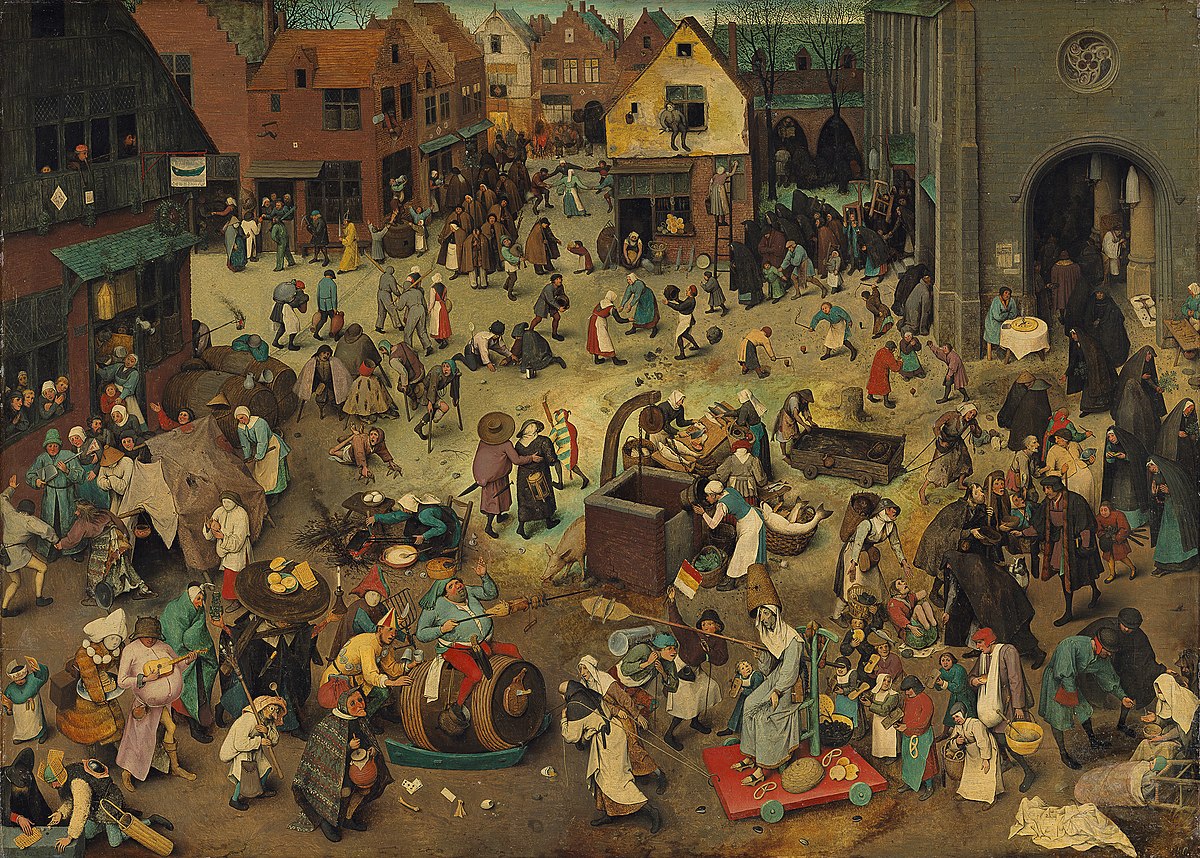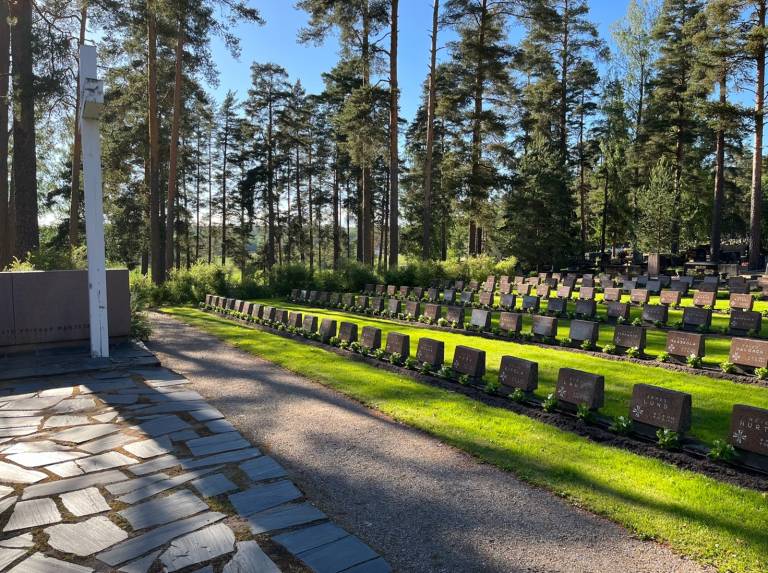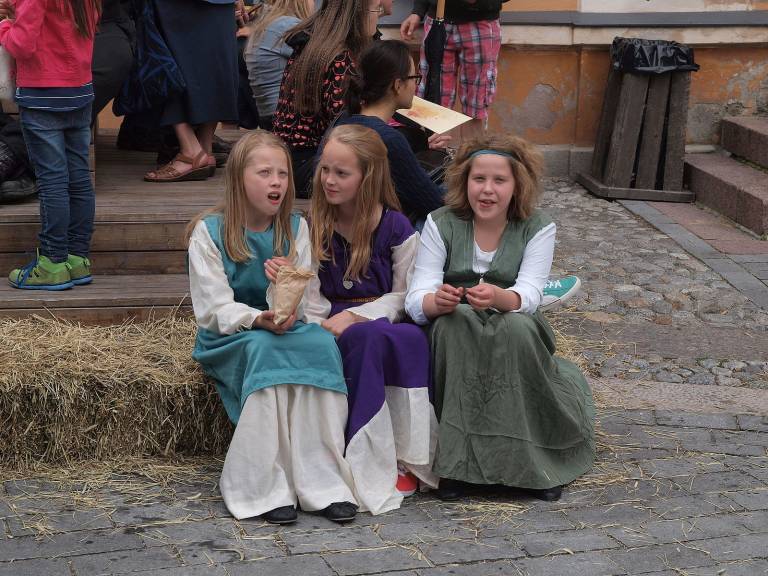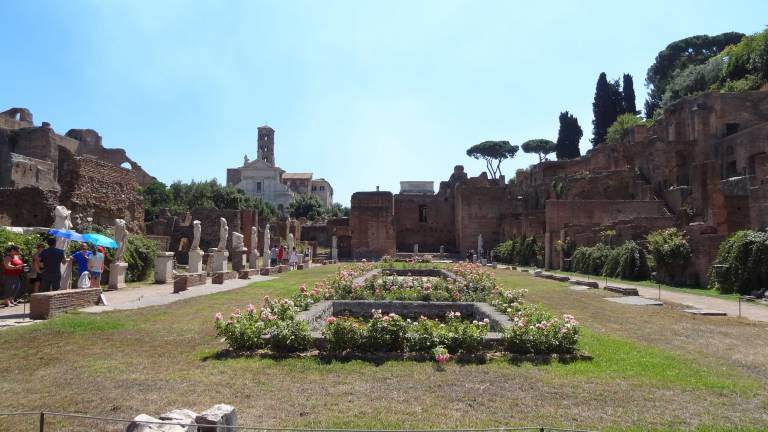Historians are bound to ask questions, not only about the current meaning of any concept that they use, but also about its meanings and existence in history – since obviously, concepts change with culture and society.
How is it possible to study the religious experiences of people who died 500 years ago and rarely left behind egodocuments, like letters, diaries and memoirs? How can religious experience be approached through secular source materials, or any materials created not by those doing the experiencing but by people around them for various reasons other than describing the experience? Is there a way for a modern researcher to analyse the intimate religious experiences of people of the past – like meeting angels?
Angels in Kokemäki
In 1647, in a manor house in the Finnish parish of Kokemäki, two spirits, who later introduced themselves as “Joseph” and “the Lord’s Angel”, started preaching through a twelve-year-old servant girl, Lisbetha Sachariasdotter. Their main message was that the bailiff of the manor should officially marry his unwed partner with whom he nevertheless had a publicly known sexual relationship – otherwise he would go blind and face a grim fate. At first, the bailiff did not know what to think. The rest of the manor’s workforce was equally unsure.
As the spirits kept visiting Lisbetha irregularly for weeks and months, the manor house staff asked the spirits questions that suggest they found it more probable that Lisbetha was trying to prank them than that real angels spoke through her. For example, they asked the spirits if a maid who had stolen some fish should be spanked for her offence. However, the spirits made no definite statement in any direction. The bailiff sought the advice of the local priest, who not only immediately confirmed the spirits’ order that the bailiff marry his unwed wife, but also came to the manor house to assess the situation by talking with the spirits. The spirits talked convincingly: they explained why God had sent them to inspire the sinning world and this specific local community to repent, and they were able to answer the priest’s questions in a way that – at least as described by the priest to the district court judge and translated by the court clerk – sounded eloquent. Gradually, both the priest and the local community came to think that Lisbetha and the whole community, at least possibly if not probably, had experienced a prolonged visit from angels.
The visiting angels in Kokemäki were dealt with in a secular court, and the story can be read from the court records. The court records include many similar stories of events that were dealt with in court as potentially religious errors or crimes, such as superstition, magic, and heresy. In this particular case, however, no crime or error was suggested, and the story was only recorded for future reference. Such records may include detailed descriptions of what happened, how different people reacted, with whom they discussed the matter, and how opinions were formed and changed and explanations given. In Kokemäki, the process started with Lisbetha but it moved on to those who heard her, the bailiff and the rest of the manor staff, and eventually the local priest. The story shows experience as defined and understood in a social process, where individual doubts and reservations gradually turned into a shared understanding of, if not the truth, at least a likely acceptable explanation. Although experiencing was done by people, they did not do it alone, but in communication with and as parts of their community. What the court record descriptions left out was Lisbetha’s point of view. This is perhaps both because she was an underage child, though working as a maid, and because her individual experience was not essential to the shared one in the adult community, which the court was interested in.
What is an experience?
The everyday meanings of “experience” can easily be traced through dictionaries, yet they give it different meanings. The Cambridge English Dictionary states that experience as a noun is often defined as “the process of getting knowledge or skill from doing, seeing or feeling things”, “something that happens to you that affects how you feel”, or even “the way that something happens and how it makes you feel”. The Merriam Webster dictionary states that experience means “1 a) a direct observation of or participation in events as a basis of knowledge, b) the fact or state of having been affected by or gained knowledge through direct observation or participation, 2 a) practical knowledge, skill or practice derived from direct observation of or participation in events or in a particular activity, b) the length of such participation, 3) something personally encountered, undergone or lived through, 4 a) the conscious events that make up an individual life, b) the events that make up the conscious past of a community or nation or humankind generally and 5) the act or process of directly perceiving events or reality”. As a verb, the various dictionaries usually point to doing, observing, and gaining knowledge or a skill.
The use of a term or a concept in the past is not a condition for using it in research today, but analysing the differences is an essential part of a critical historical methodology.
Historians are bound to ask questions, not only about the current meaning of any concept that they use, but also about its meanings and existence in history – since obviously, concepts change with culture and society. The use of a term or a concept in the past is not a condition for using it in research today, but analysing the differences is an essential part of a critical historical methodology. The word “experience” derives from the Latin “experientia” and “experimentum”. Both words appear already in classical Latin and according to Charlton T. Lewis and Charles Short (A Latin Dictionary), they were synonymous, meaning a trial, proof, test, experiment; the knowledge gained by repeated trials, experimental knowledge, practice, experience. Correspondingly the verb “experior” meant to try, prove, put to the test or to undertake, attempt, make trial of, undergo, experience a thing. Similar meanings were conveyed by medieval Latin: Papias, the 11th-century lexicographer, defined “experitus” as not experienced but as well-learned.
The Oxford English Dictionary defines experience starting from the Middle Ages. As a noun, an experience meant an event, the action of putting to the test (1393); a procedure or operation performed in order to ascertain or illustrate some truth, an experiment (1384, now obsolete); proof by trial and practical demonstration (1393, now obsolete); observation of facts or events (1377); a state or condition viewed subjectively; what has been experienced (1607); and knowledge resulting from actual observation or from what one has undergone (1553). As a verb, the meanings are slightly younger: to experience means to make trial or experiment of, to put to the test (1541); to ascertain or prove by experiment or observation (1541); to have experience of, to feel, suffer, undergo (1588); and to learn by experience (1586).
The word “experience” is also conceptualized differently in the various languages that a historian’s source materials may include. Clearly, a similar meaning of experimental knowledge was transferred to other contexts and languages. According to Vanhan kirjasuomen sanakirja, the term “kokemus” first appeared in one of the earliest pieces of Finnish-language literature, the prayerbook Rucouskirja (1544) by Mikael Agricola, in the clarification of communion and the experience of taking part in grace by consuming the blood and body of Christ. Languages like Finnish, Swedish, and German also make a distinction between an immediate experience – elämys (in Finnish), upplevelse (in Swedish), or Erlebnis (in German) – and experience as a cognitive process – termed kokemus (in Finnish), erfarenhet (in Swedish), or ehrfahrung (in German). In everyday use, “experience” still today has a strong “inner” and intimate connotation, and it often points towards mundane and singular events, occurrences in life, and personal emotional responses to them. Likewise, the religious is – at least in the Nordic countries of today – often thought of as a personal choice and a private sphere of life.
If we return to the question posed at the beginning: is it possible at all to use medieval and early modern source material for the study of the experience of religion? After all, they were usually produced by some sort of authorities or elites for the purpose of control and guidance rather than the mere recording of things as they were. Additionally, more often than not they survive only fragmentarily. How can we know how medieval and early modern people really thought about religion; what were their authentic feelings and comprehension?
How can we know how medieval and early modern people really thought about religion; what were their authentic feelings and comprehension?
Here we would like to point out that in analytical use, experience is not only a singular occurrence in an individual’s life or an inner unmediated feeling. Even intimate, personal experiences are born from the interaction with the surrounding community and culture. Our experiences are not ours – they have one foot in cultural conventions and social interaction. The same holds true for people of the past; the interconnection of the individual and the social makes events meaningful, and it is possible to analyse this interconnection, as the example of Lisbetha demonstrates.
No individual is free from society or culture. Socialization into the norms and values of the surrounding society begins at birth – if not in utero – when the child or foetus gets accustomed to the sounds, tastes, and movements of her surroundings. There is no genuine experience without outer influence – not even in our own heads, especially when they are shared. Without wishing to belittle the importance of nonverbal communication in human interaction, the majority of information, memories, and events are, nevertheless, shared verbally. Language, in turn, is a social contract both mediating and creating reality. Therefore, it is inevitably present in our secret thoughts and in the ways we analyse and interpret our physiological reactions to ourselves. Indeed – are our own experiences “authentic” when we revisit them in our recollections?
There is no genuine experience without outer influence.
The analytical tool of experience is used not only as a category, but also as a question, asking how experience is formed, produced, and communicated. This angle is already present in the dictionary meanings, but the analytical use of the concept places more emphasis on it: experience does not just happen, it is an active effort and a cognitive process that connects the singular events not only to other events, analysing similarities and differences, but also to the explanations given to those events by the observers themselves and the others that they know. Experience is a process of giving meaning, of turning date into information, of explaining isolated occurrences within a coherent worldview. As such, it connects the individuals and societies as well as their past histories to future expectations. Understood like this, experience loses some of the focus on the individual and the intimate, and gains more emphasis on the cognitive and communal, social aspects of turning singular occurrences into generalizable (at least for those sharing the experience in question) knowledge.
How to study past experiences in premodern sources
Studying experience is demanding in any given context. Temporal distance and textual material produced by outsiders – not those “experiencing” – increase the challenges of studying premodern religious experiences. Curiously enough, these same challenges provide an analytical advantage for the researcher. The past is a foreign country, they say, and the medieval and early modern eras seem foreign enough. There is little use for a historian to ponder the authenticity of experiences of the miraculous, the demonic, or witchcraft. Instead, they offer an excellent view of the social, process-like nature of “experience”. Only the shared process of giving meaning turned the encounters with saints, angels, and demons into culturally and socially sanctioned events: experiences.
Sources do not reveal “what really happened” – whether Lisbetha actually saw angels, demons, or nothing at all. Instead, the communal negotiations of the event, one may say the social side of experience, is typically well documented. The court records reveal the discussions of Lisbetha with the bailiff and the priest and others, albeit in a mediated form. Since the background event is “foreign” to the modern reader, it may facilitate concentrating on the process of giving meaning. This advantage may be lost when studying the more familiar events and phenomena of recent history. Therefore, medieval and early modern sources are not more problematic in the study of experience than material from any other era. Sensitivity to the context, profound comprehension of the nature of sources, and a keen eye for detail are prerequisites for all scholars of historical experiences.
In medieval and early modern societies, religion was always a part of the everyday, inseparably entangled with economics, politics, and culture.
Historians studying medieval and early modern societies in general, and the history of religion in particular, have long pointed out that the modern understanding of religion as something private was not prevalent during those periods. In medieval and early modern societies, religion was always a part of the everyday, inseparably entangled with economics, politics, and culture. It created, supported, and questioned hierarchies, gender, and identities.
“Lived religion” offers an approach that emphasizes this entanglement, but also a possible methodology to investigate it. It is not synonymous with “popular religion” or a “history from below”, nor does it mean the study of mentalities, the slowly changing worldviews that form the background of “experience”. Religion-as-lived concentrates on the social processes of believing and expressing faith in everyday life, both consciously as part of one’s daily tasks and life choices, and habitually in customs, gestures, and rituals. This means an emphasis on what people do and how they “make” their religion, instead of what religion is supposed to be. It also means that even those customs and beliefs of the past that seem “odd” and “irrational” to the modern eye are taken seriously, not brushed aside or anachronistically categorized as an example of past superstition or a cynical smokescreen for “more real” or more tangible objectives.
As analytical concepts, “lived religion” and “experience” are not the same but intertwined on many levels. They share the same interest in the interplay of structure and agency – the self and society.
As analytical concepts, “lived religion” and “experience” are not the same but intertwined on many levels. They share the same interest in the interplay of structure and agency – the self and society. In our conceptualizations, lived religion offers the frames of interpretation for experiences. Lived religion is thus a methodology that enables us to recognize individual experience’s wider connections to society and culture as well as better understand and scrutinize the role of imagination, emotions, sensory elements, and embodiment in forming experiences. When religion is defined as lived, it calls for personal agency and faith, while people can have other kinds of religious experiences as well: victims of religious persecution have experiences of the dominant religion, denomination, or institution without being part of it or believing in it.
As for the challenges of studying past religious experiences; obviously, less textual material is preserved from premodern times than those closer to the modern day. On the other hand, since religion was such a pervasive element of premodern society and culture, nearly all the preserved material includes religion from one angle or another. As a consequence, religion has been widely studied among scholars of premodern eras; this has been the situation long before the recent “religious turn”, which has brought religion again to the fore of humanistic and social sciences. The “secularization paradigm”, meaning the gradual yet inevitable transition from the “era of faith” to secularized societies where religion no longer plays an important role, long kept religion on the margins of research. Recently, the paradigm has been discredited if not fully repudiated; it is valid – if at all – only in some Western societies, while the rest of the world is still inherently religious. Furthermore, the researchers’ focus on modernization has led to silo thinking within scholarship: historians of the modern are more eager to pigeonhole research and researchers into “secular” historians, church historians, or theologians in the field of the study of religion. This kind of categorization is not valid in the analysis of lived religion or religion as experience: “experience” is a holistic phenomenon and the multivocal research enables the avoidance of futile categorizations.






